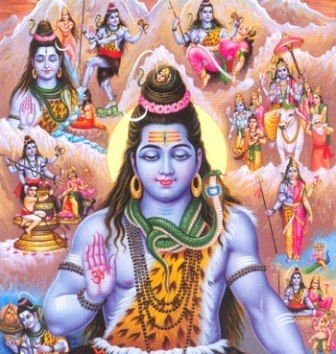One of the most revered deities in Hinduism, Lord Shiva. To achieve several goals, Lord Shiva appeared in various forms. Being a creator, destroyer and the Guru of Gurus, each avatar shows a different aspect of his divine essence. These different forms of Lord Shiva help devotees to gain spiritual knowledge and achieve their desired goals. Here, we are going to mention the avatars of Lord Shiva and their significance:
Pashupatinath
Pashupatinath Ji is known as the Lord of all living beings. This form of Lord Shiva shows compassion for all living things. This avatar encourages people to appreciate nature and live in harmony with it by symbolizing the interdependence of people, animals and the natural environment. In Nepal, the most famous is the Pashupatinath Ji temple, where he is revered as a guardian deity.
Nataraja
The Nataraja form of Lord Shiva represents the cosmic dancer in which he is depicted performing the Tandava. This form of Lord Shiva symbolizes the cycles of creation, preservation and destruction throughout the universe. The idol of Nataraja is surrounded by flames, which emphasizes the rebirth of the universe and the destruction of ignorance. Nataraja teaches on the transformative power of divine energy and the certainty of change. In the Nataraja form, Lord Shiva controlled the demon Apsara, who used to confuse people with illusion and ignorance.
Ardhanarishvara
In this beautiful form of Lord Shiva, he represents the unity and combination of male and female energies. In this form, Shiva is depicted as one with Goddess Parvati, half woman, half man. This form represents the perfect harmony of male and female forces. It symbolizes that without the union of Shiva (awareness) and Shakti (energy), creation and life are incomplete.
Mahakal
Mahakal is known as the God of Time who represents the destructive side of Shiva and who has the full power to control time. Mahakala is also seen as a strong protector of followers and a preserver of Dharma. The Mahakaleshwar Temple is dedicated to Lord Mahakala.
Bhairava
One of the fierce forms of Lord Shiva, Bhairava is associated with both protection and destruction. This avatar, often depicted with a trident and a fearsome face, represents the destruction of ignorance, ego, and fear.
Dakshinamurthy
Lord Dakshinamurthy is another form of Lord Shiva, who is known as the supreme teacher or Guru. Lord Shiva is the Guru of Gurus and the Guru of knowledge seekers. In this form, he is shown sitting under a banyan tree. This avatar emphasizes the value of knowledge and self-realization.
Virabhadra
Another warrior form of Lord Shiva is Veerbhadra. Lord Shiva became angry and created Veerbhadra when his wife Sati immolated herself. This ferocious avatar represents the power of Dharma and righteousness. Devotees are inspired to protect moral principles and oppose injustice.
Aghora
Aghora is the ascetic form and is also considered a destroyer. Aghora symbolizes Shiva’s transformative and stern nature. This incarnation, which is associated with cremation grounds, signifies the acceptance of death as the ultimate reality and disconnection from the material world. It encourages followers to accept the life-death cycle and rise above fear.
Rudra
Rudra is also the fiercest form of Lord Shiva. An early Vedic form of Shiva, Rudra represents the untamed and ferocious sides of nature. Hunting, storms and the wild are all associated with him. Rudra symbolizes the cleansing force of destruction, which makes room for rebirth and growth.
Kaal Bhairav
Kaal Bhairav, as the name suggests is the god of time and death and is one of the fiercest forms of Lord Shiva. This form of Lord Shiva encourages people to understand the purpose of their existence and the importance of focusing on spiritual growth.

